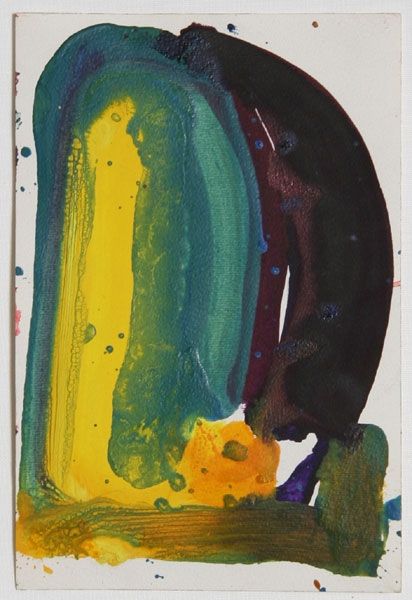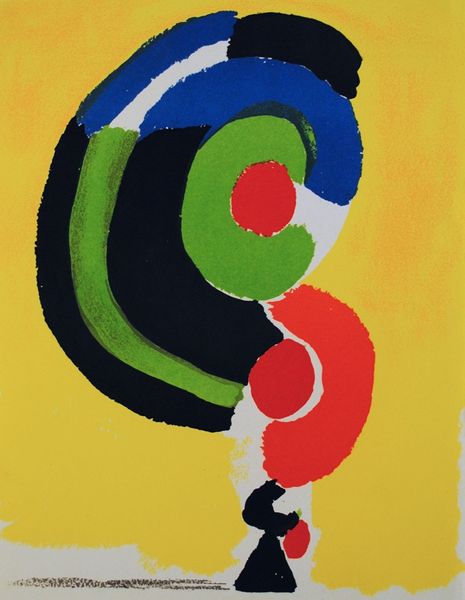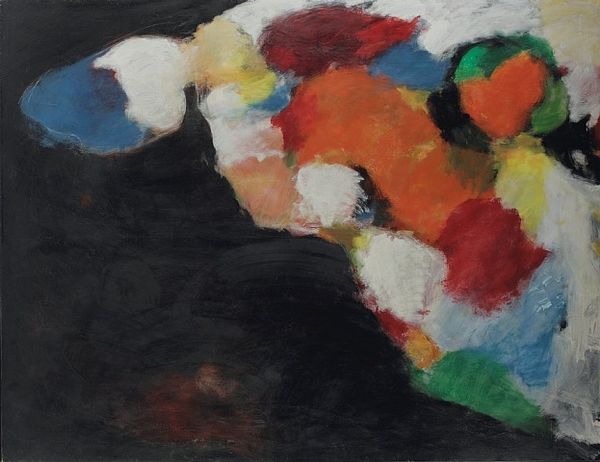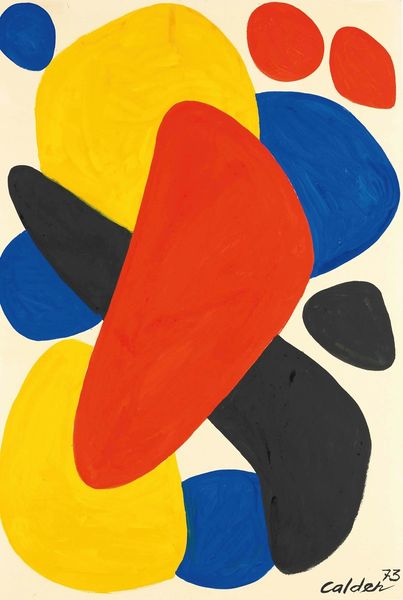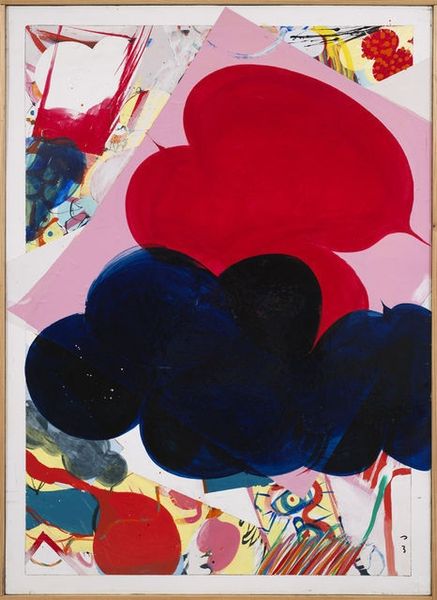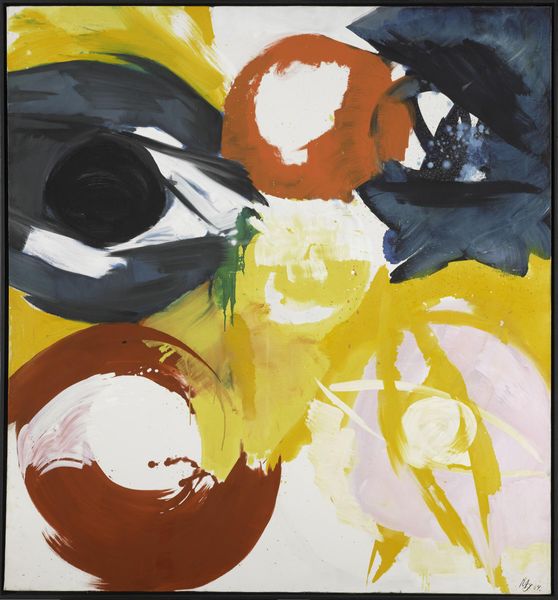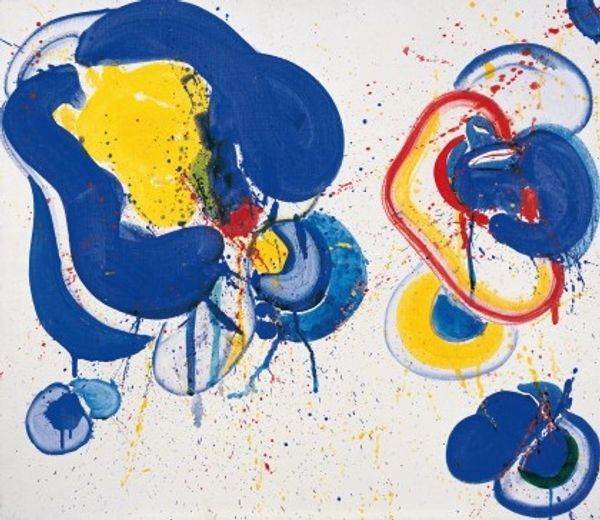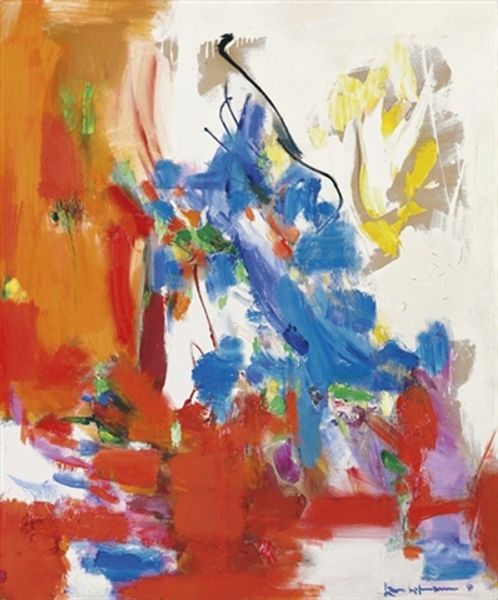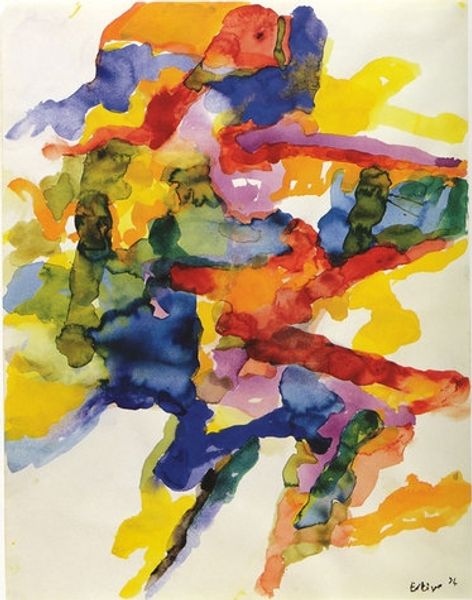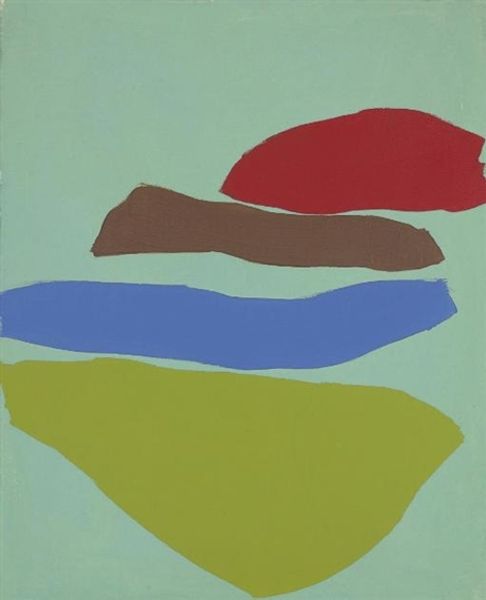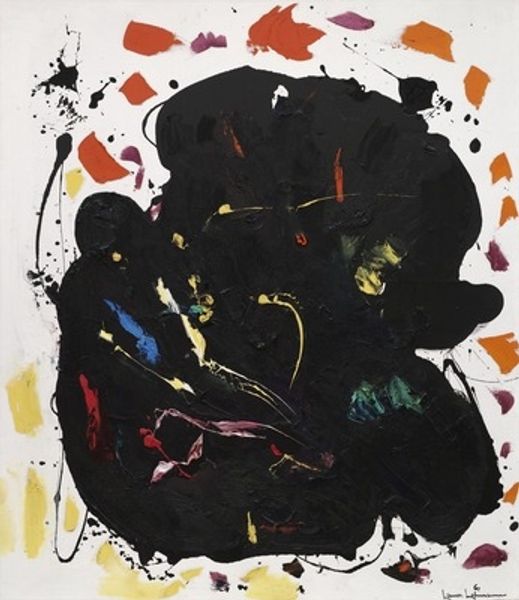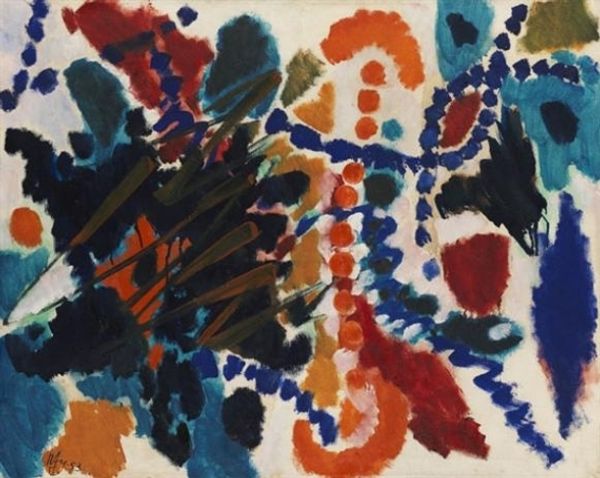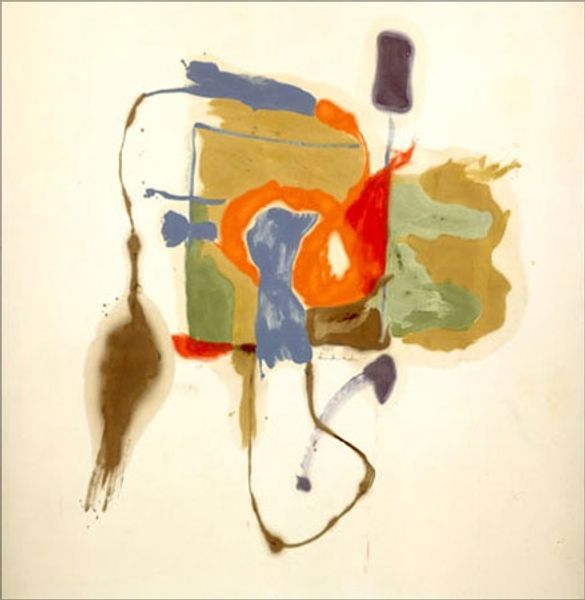
acrylic-paint
#
abstract-expressionism
#
acrylic
#
acrylic-paint
#
acrylic on canvas
#
geometric
#
abstraction
#
gutai
Copyright: Sadamasa Motonaga,Fair Use
Curator: We’re standing now before Sadamasa Motonaga's "Work," painted in 1964. He worked primarily with acrylic paint on canvas. Editor: Immediately, I'm struck by how these vibrant colors are allowed to bleed and blend, yet still hold their distinct shapes. It's like witnessing controlled chaos. Curator: Yes, and that "controlled chaos" is so characteristic of the Gutai movement. Motonaga, along with other Gutai artists, were rebelling against traditional art forms in post-war Japan. It was a time of intense social change, and art became a vehicle for expressing freedom and challenging established norms. Editor: The way the acrylic paint is applied seems crucial. He isn't brushing it so much as pouring it. The forms remind me of surrealist automatism. Curator: Absolutely. Gutai artists frequently explored new materials and techniques to liberate the art-making process, emphasizing gesture and materiality. They questioned the traditional role of the artist as the sole creator, opening art to chance and accident. "Work," specifically, exemplifies Gutai’s move to physical engagement within art. Editor: There is an almost playful interaction of shapes here. I see no brushstrokes, just these organically pooling forms in primary colors. It's visually engaging, a push-and-pull of figure and ground relationships, despite the seemingly simple composition. It's bold, declarative even. Curator: Motonaga’s work resonated deeply during a time when artists aimed to create new visual vocabularies reflective of cultural upheaval. The Gutai group showed that art wasn’t just something made *by* an artist, but an event co-created *with* material. Museums displayed this spirit prominently, highlighting art as a place where materials revealed and played out transformative effects. Editor: Looking at this, I am captivated by this raw energy of its form and vibrant color palette. It is less about representation, and more a celebration of color itself. Curator: For me, it’s how Motonaga’s piece represents art's role to serve cultural needs by using abstraction and action to move past historical constraints. It invites all of us to witness art that pushes against boundaries.
Comments
No comments
Be the first to comment and join the conversation on the ultimate creative platform.
